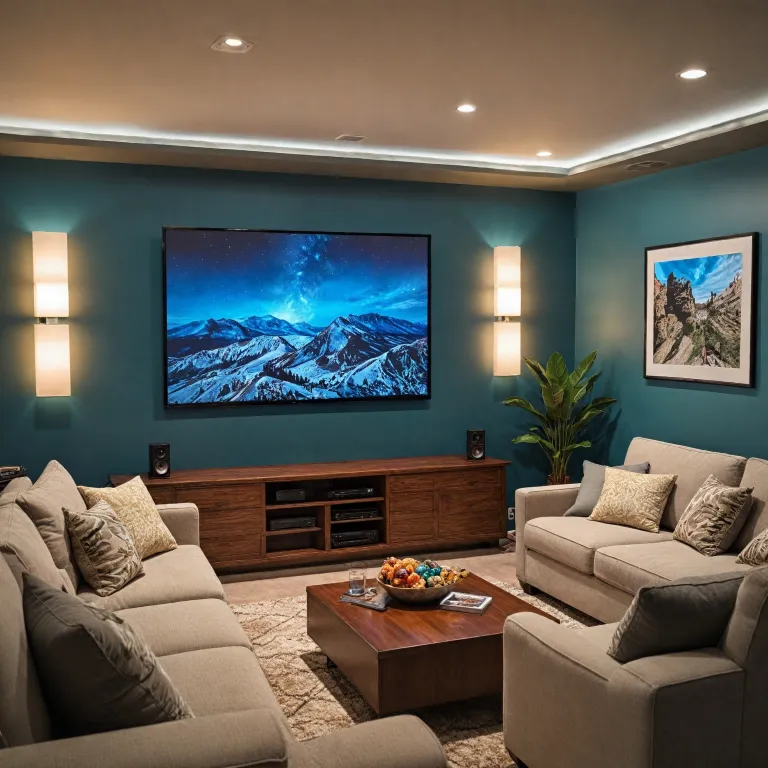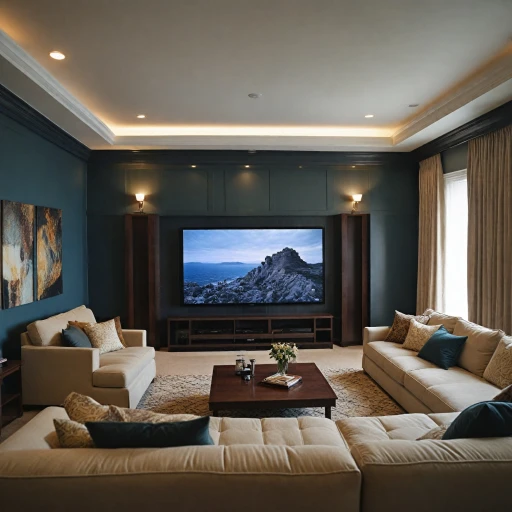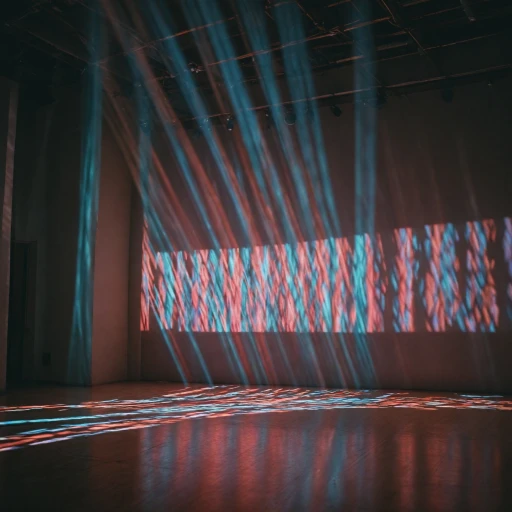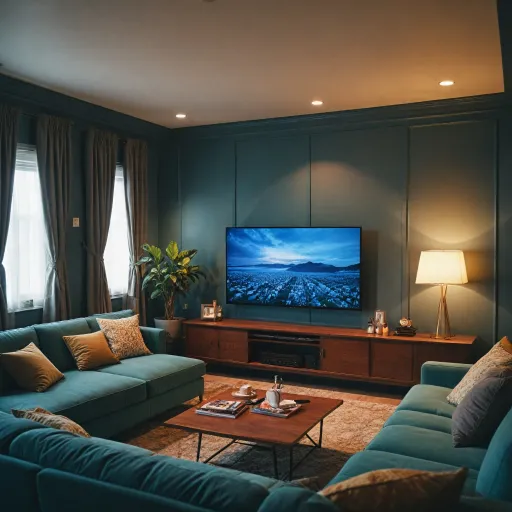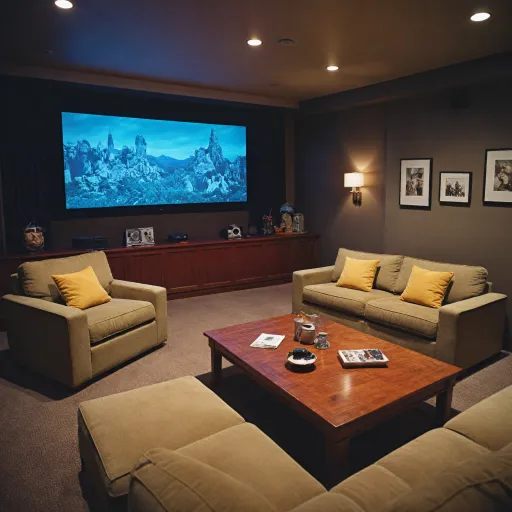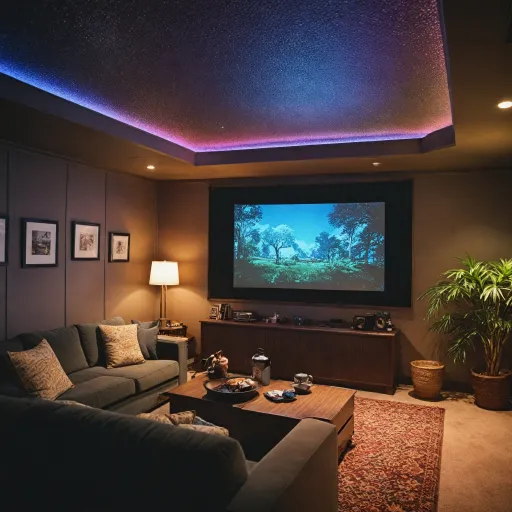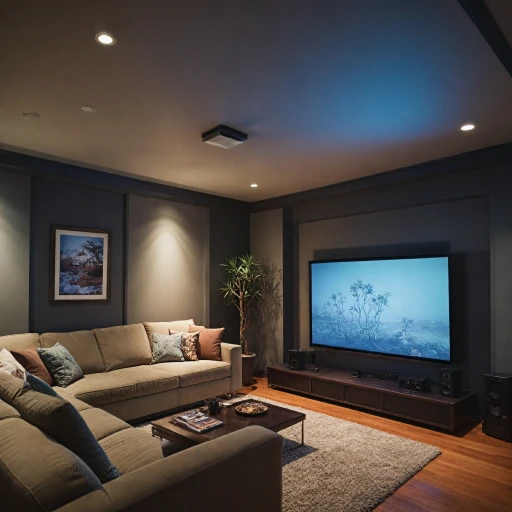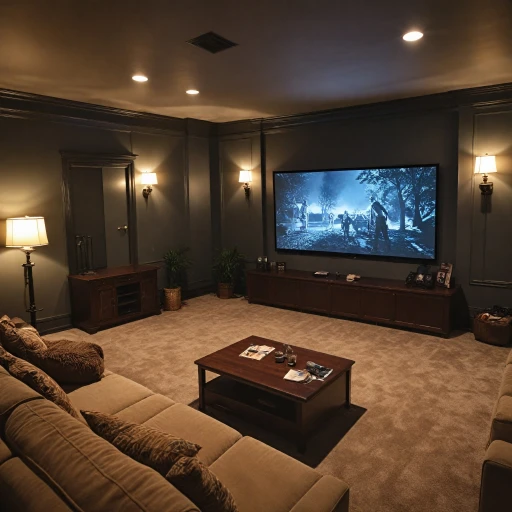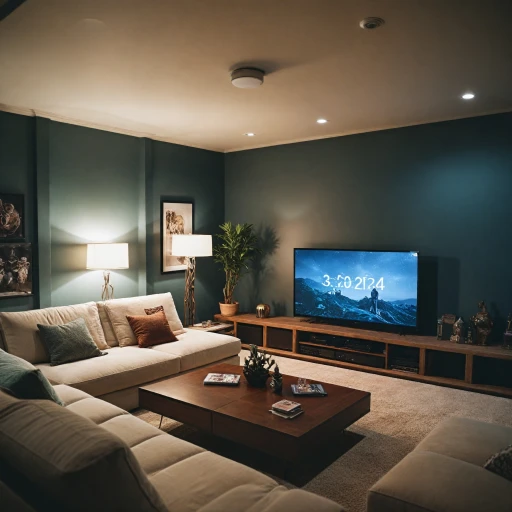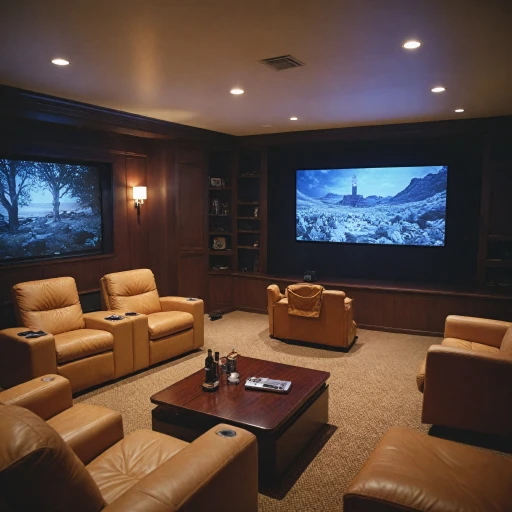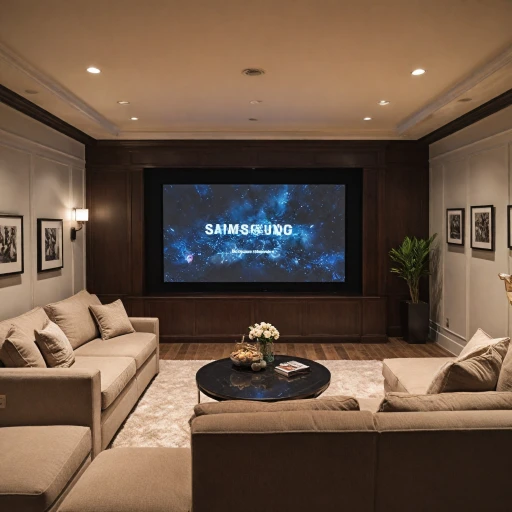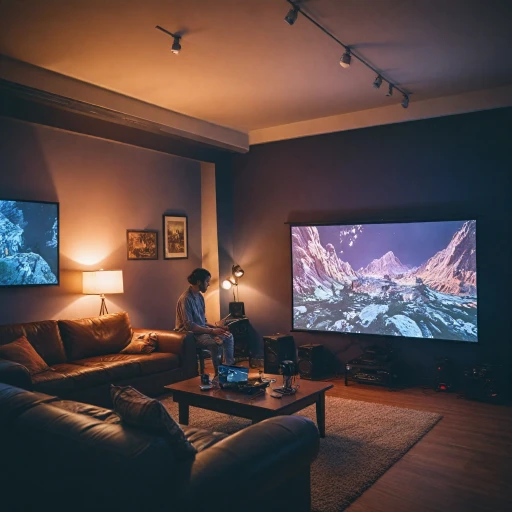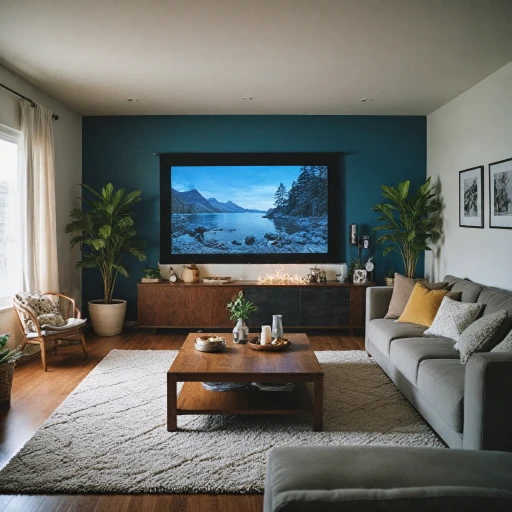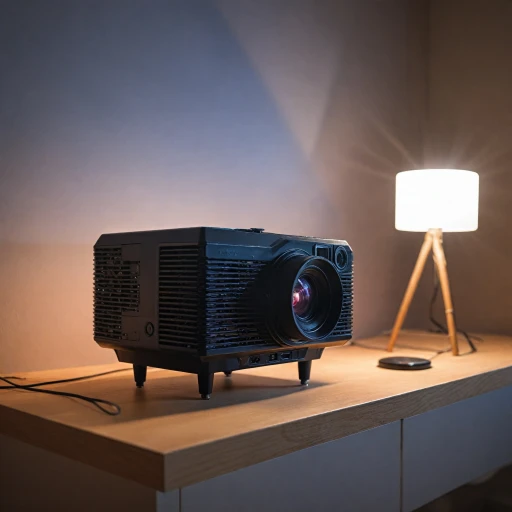
What Does 2000 Lumens Mean?
Decoding the 2000 Lumen Label
When you encounter the term 2000 lumens on a home theater projector, it refers to the measurement of brightness the device is capable of producing. Much like a flashlight's bulb, this measurement enables us to gauge the amount of light output a projector will emit. In the context of projectors, lumens help determine how bright your projected image will be under varied lighting conditions.
The lumens rating essentially indicates the energy efficiency and power of the projector's light source. Whether using traditional bulbs or the more modern LED lighting, higher lumens often translate to brighter images. However, it’s crucial to understand that the lumens rating alone doesn't guarantee superior image quality. Various factors, including the room’s lighting environment and the projector's resolution capabilities, play a significant role (more on that later).
For those wondering whether a 2000-lumen projector suits their home theater setup, it’s important to recognize how this level of brightness stacks against other options, like the 6000 lumen projectors. While not at the high end of the brightness spectrum, 2000 lumens offer a versatile balance for indoor and some outdoor lighting conditions. These projectors are generally ideal for controlled-room setups where you have more lighting control.
Ideal Room Conditions for 2000 Lumens
Optimizing Your Room for a 2000 Lumen Projector
Understanding the ideal room conditions for using a projector with 2000 lumens is critical for achieving optimal viewing quality. With the right setup, the brightness and clarity of your projector's output can be maximized, enhancing your home theater experience.
One of the primary factors to consider is the room's ambient light. Natural light can significantly impact the perception of brightness. Therefore, it's best to set up your projector in a room where you can have full control over the lighting conditions. Consider:
- Lighting Control: Using blackout curtains or blinds to minimize outdoor light interference can enhance the brightness levels of your projector.
- Wall Color: Dark-colored walls can absorb any stray light beams, reducing glare and reflections that could affect image quality.
- Smart Lighting: Implement smart lighting solutions to adjust the room's light intensity, easily tailing the ambiance to your viewing needs.
Compact or smaller rooms typically provide an excellent setting for a 2000 lumen projector due to their ability to manage ambient light more effectively than larger spaces. Additionally, the light source type, whether LED or incandescent bulb, can influence brightness perception.
When setting up a home theater, it's important to consider the power of your light sources. Higher lumen ratings in LED lighting can sometimes cast too much light, so it's essential to maintain a balance. Be mindful of the lighting lumens in your light bulbs to ensure they complement rather than overpower your projector.
By taking these factors into account, you can effectively leverage the power of 2000 lumens output for an impressive and immersive viewing experience.
Comparing 2000 Lumens to Other Brightness Levels
How 2000-Lumen Brightness Stands Among Other Options
When selecting a home theater projector, understanding how a 2000-lumen projector fares against other brightness levels is essential for making an informed choice. Many factors come into play, such as the size of the room, ambient lighting, and the desired visual experience.
A projector with 2000 lumens of brightness is generally suitable for rooms with controlled lighting—meaning environments where you can manage the amount of light entering the room. Think about spaces with curtains or blinds that can effectively block outdoor light sources. This brightness level offers a decent image quality without requiring too much power or energy, making it a popular pick for smaller, cozy home theaters.
When considering projectors with higher lumens, like those reaching 3000 or even 6000 lumens, it becomes clear that they are equipped to handle rooms with substantial ambient light or larger spaces. For further insight on brighter projectors, you can explore a true 4K projector for your home theater that offers an elevated light output.
Ultimately, while a 2000-lumen projector can provide a visually appealing experience in a dim environment, it may not deliver the same performance in well-lit rooms where an incandescent bulb or LED lumens measure significantly higher is required. Consider your specific room conditions and lighting preferences to balance lumens and image quality effectively.
Impact of Screen Type on Brightness Perception
Influence of Screen Type on Brightness Perception
When discussing the 2000-lumen brightness of home theater projectors, it's important to acknowledge how the type of screen you use can affect how bright the image appears. While lumens provide a measurable output of light, the final perception of that brightness is influenced by the surface onto which the projector beams. Different screens react distinctively to the projector's light. The gain of a screen is a crucial factor, as it measures how light is reflected from its surface. A high-gain screen reflects lumens more effectively, appearing brighter from certain angles, while a low-gain screen disperses light more evenly, offering better views from wider angles but may not seem as bright. Therefore, if you want to heighten the bright lumens perception, opting for a high-gain screen can offer the boost needed to enhance those 2000 lumens output. Moreover, the choice between matte, glossy, and fabric screens also impacts brightness. Matte screens tend to reduce reflections, thus maintaining a consistent light output across the viewing area. On the other hand, glossy screens can increase perceived lumens bright levels in controlled lighting rooms, making them appear more vibrant, but they may introduce glare under improper lighting conditions. In addition, the concept of ambient light rejection (ALR) screens has become more common. These screens are designed to combat extra lighting in the room by minimizing reflections from other sources such as windows or lighting fixtures, directing more of the projector's beam towards the audience. This makes 2000 lumens feel significantly more powerful and bright lumens active in such environments. The perfect balance of screen type and brightness can significantly enhance your home theater experience, ensuring your projector creates a high lumen impact while balancing the energy efficient approach of led lighting. While there are an array of light bulbs and lumens measures to consider, choosing the right screen can amplify smart lighting choices for a stunning visual experience.Balancing Brightness with Image Quality
Optimizing Image Quality Alongside Brightness Output
Achieving the perfect balance between brightness and image quality in a home theater projector is crucial for an immersive viewing experience. While a 2000-lumen projector provides a foundation for satisfactory performance, several factors interplay to shape the final output. Firstly, understanding how brightness and resolution work in tandem is key. Higher lumens don’t automatically equate to better image quality. A projector that merely emits a bright beam of light without regard to resolution, contrast ratio, and color accuracy might blunt the viewing experience. Therefore, an incandescent bulb or a high lumen LED light should be chosen with the awareness that despite their high lumens or led lumens output, they must be complemented with good resolution technologies. The light source is another pivotal consideration. LED lighting provides consistent performance and longevity compared to traditional light bulbs. It’s essential to measure lumens accurately, as a lumens measure often correlates with the projector's life span and power efficiency. LEDs efficiently convert energy (watts) into visible light, ensuring that the projector remains bright yet energy-efficient. Room lighting conditions also dictate how well the brightness lumens are perceived. For instance, in darker rooms, a lower lumen measure could suffice, while rooms with ambient lighting demand higher lumens light output to maintain sensory experiences. Smart lighting solutions can offer adjustable settings that allow you to tailor the lighting environment for optimal projector performance. Lastly, the projection screen plays a significant role in the perception of image quality. A screen that complements the brightness level by amplifying contrast and sharpness can significantly enhance the visual experience. Experimenting with different screen materials, including those designed for outdoor lighting scenarios, can guide users in optimizing the projector's capabilities. Remember, while the quest for lumens bright and luminous projectors is vital, the ultimate measure of a home theater setup’s success lies in achieving a harmonious balance between all components involved. Thus, the bright lumens output should not overshadow the need for overall visual excellence.Practical Tips for Enhancing 2000-Lumen Projector Performance
Enhancing the Performance of a 2000-Lumen Projector
Ensuring your 2000-lumen home theater projector delivers the best possible viewing experience involves more than just settling for what comes out of the box. Here are a few practical tips to optimize its performance:- Optimize Room Lighting: For a 2000-lumen projector, the lighting conditions in your viewing room make a big difference. Minimize ambient lighting as much as possible; this allows the projector’s beam to shine brighter, ensuring colors and contrast are more vivid. Investing in blackout curtains or blinds can significantly aid in achieving near-cinema darkness.
- Adjust Screen Surface: The type of screen you use can heavily influence the perceived brightness. Screens with a higher gain will reflect more light, increasing brightness for the viewer, essential in settings that are not completely dark. While a matte white screen is a common choice, experimenting with grey screens might enhance contrast in less-than-ideal lighting conditions.
- Regular Maintenance: A well-maintained projector ensures the continued brightness of the image. Clean the lens regularly to prevent dust build-up, which can dim the image. If your projector uses a traditional bulb, periodic replacement before it noticeably dims can preserve performance. Consider upgrading to LED lighting, known for its consistent output and longevity.
- Adjust Image Settings: Explore the brightness and contrast settings in the projector menu. It might be tempting to ramp up the brightness, but balancing these settings can enhance image quality without washing out colors—aligning perfectly with considerations between brightness and resolution.
